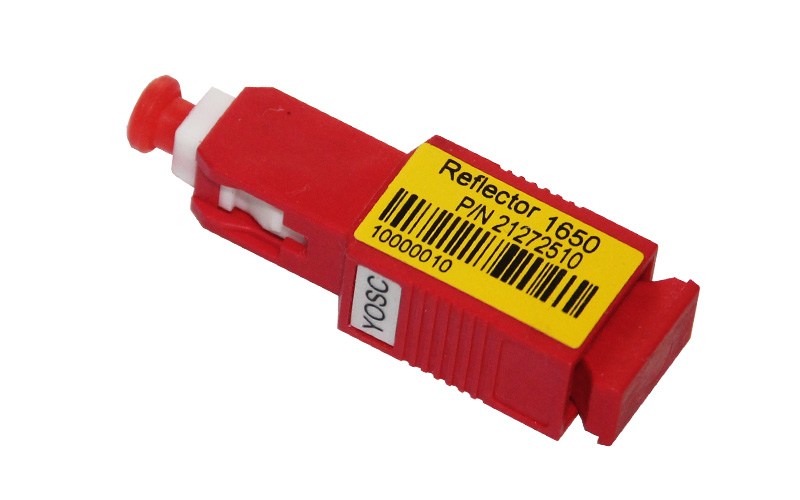
Why Use a 1650nm FBG Reflector?
Traffic-Safe Testing:
1650nm is outside the C/L-band (1530nm–1625nm), preventing interference with DWDM systems.
Bidirectional Efficiency:
Eliminates the need for two reflectors (one per direction), reducing cost and complexity.
High Precision:
FBG's sharp reflection peak improves OTDR trace clarity vs. broadband mirrors.
Integration Guidelines
Placement: Install at the far end of the fiber link or at splice points.
Compatibility: Works with standard SC/APC OTDR test ports.
Avoid Mismating: Never connect to UPC ports (physical damage risk).
✔ Wavelength: 1650nm
Dedicated to OTDR (Optical Time-Domain Reflectometer) testing, avoiding interference with live traffic (1310/1550nm systems).
✔ Bidirectional Operation:
Reflects OTDR signals from both directions, enabling comprehensive fiber link characterization.
✔ FBG (Fiber Bragg Grating) Technology:
Narrowband reflection peak at 1650nm (±0.5nm), filtering out other wavelengths.
High return loss (>14dB) for accurate fault detection.
✔ Connector: SC/APC (Green)
Angled polish minimizes back reflections (<-65dB).
Low Insertion Loss: <0.5dB (typical)
Minimizes signal attenuation during testing.
✔ Compact Design:
Typically housed in a 1x1 port module or inline splice-on configuration.
✔ High stability and reliability;
✔ Remote real-time detection;
✔ Low insertion loss;
✔ Easy connection foradapter structure;
✔ Compliant with Telcordia GR-326-CORE, Telcordia GR-1221-CORE;
✔ Compliant withRoHS.
✔ OTDR Calibration & Reference:
Provides a known reflection point for distance/loss measurements.
✔ Live Fiber Monitoring:
Safely tests fibers without disrupting active 1310/1550nm traffic.
✔ PON/FTTH Troubleshooting:
Identifies faults (breaks, bends, splices) in GPON/XPON networks.
Data Center & Long-Haul Fiber Certification:
Validates splice quality and end-to-end loss.
FAQ
Q: Can I use this with a 1625nm OTDR?
A: Yes, but reflection efficiency may drop slightly (FBG has a narrow bandwidth).
Q: Is it reusable?
A: Yes, if connectorized (SC/APC). Splice-on variants are permanent.
Q: Insertion loss too high?
A: Check for connector contamination or replace with a ultra-low-loss FBG (<0.2dB).
Q: Vendors?
A: Thorlabs, AFL, FS.com, and OZ Optics offer reliable FBG reflectors.
✔ OTDR Calibration & Reference:
Provides a known reflection point for distance/loss measurements.
✔ Live Fiber Monitoring:
Safely tests fibers without disrupting active 1310/1550nm traffic.
✔ PON/FTTH Troubleshooting:
Identifies faults (breaks, bends, splices) in GPON/XPON networks.
Data Center & Long-Haul Fiber Certification:
Validates splice quality and end-to-end loss.

© 2024-2026 ARTIC FIBER OPTIC CO.,LTD. All Rights Reserved.